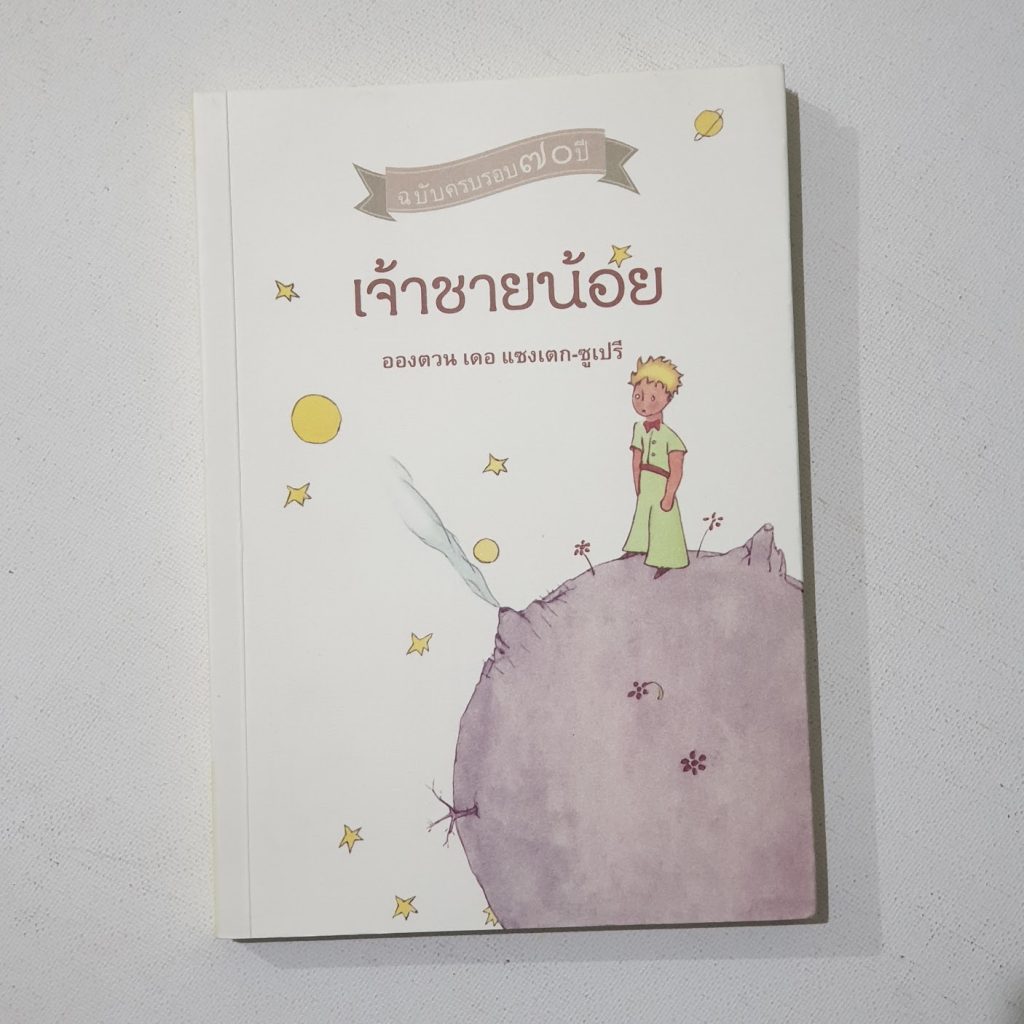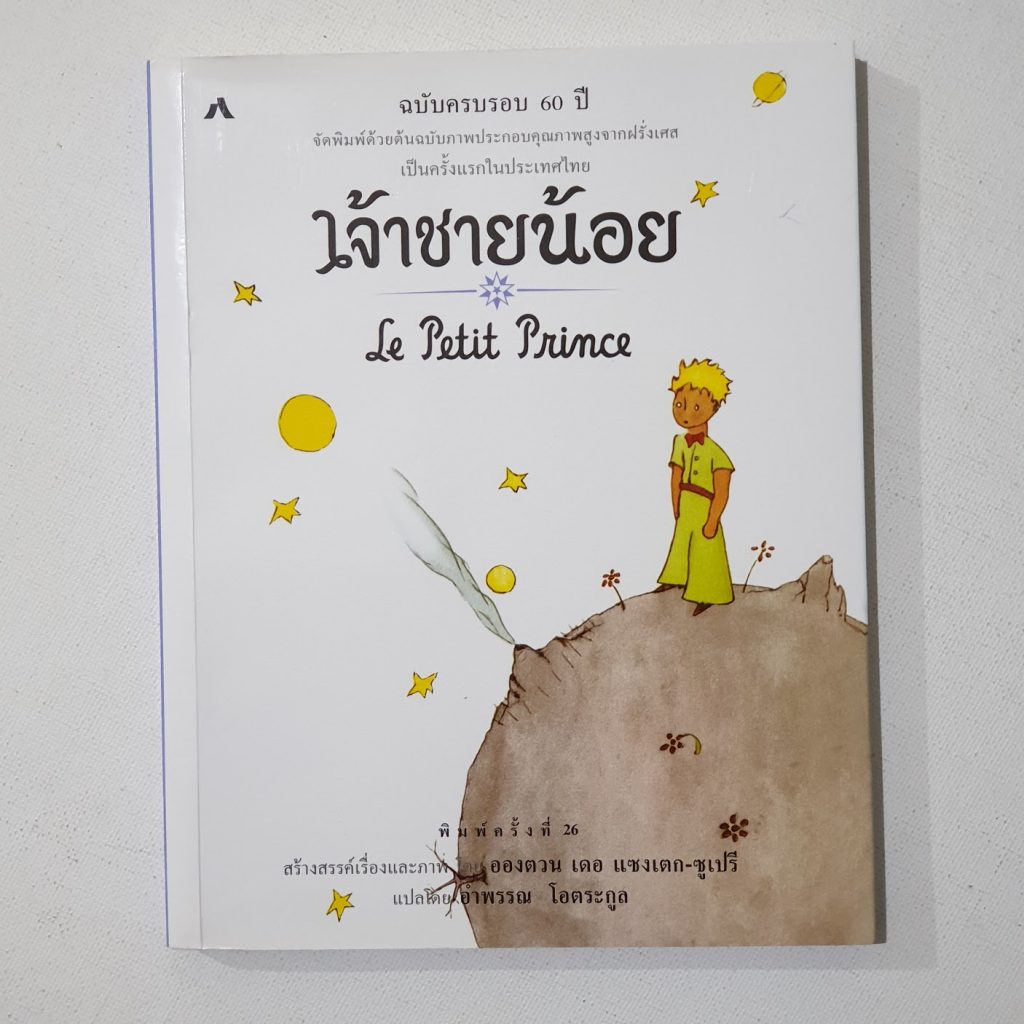
เจ้าชายน้อย / Cêā chāy n̂oy — in Thai.
The Thai language, also known as Siamese, is the national and official language of Thailand, spoken by the majority of the country’s population. It’s a member of the Tai group of the Kra-Dai language family. Thai is a tonal language, known for its complex system of tones that can change the meaning of words. It plays a crucial role in Thai culture and identity, serving as a key component of Thailand’s rich literary, religious, and historical heritage.

เจ้าชายน้อย / Cêā chāy n̂oy — also in Thai.
Thai features a complex phonetic inventory, including a variety of consonants, vowels, and diphthongs. A distinctive feature of Thai is its use of five tones: mid, low, falling, high, and rising, which are essential for distinguishing meaning between otherwise phonetically similar words.
Thai grammar is relatively straightforward compared to many Indo-European languages. It does not inflect for gender, number, or case for nouns or pronouns, nor does it conjugate verbs for tense. Time, tense, and aspects are usually indicated by context or the use of temporal markers. The typical sentence structure follows a Subject-Verb-Object (SVO) order, but this can be flexible in poetry or for stylistic purposes.

The Thai script is an abugida, where consonant characters are written with an inherent vowel sound that can be changed with vowel markers. It was introduced in the 13th century by King Ramkhamhaeng, based on earlier scripts used in the region. The script includes 44 consonants, 15 vowel symbols that combine into at least 28 vowel forms, and four tone diacritics.
Thai vocabulary is a mix of original Tai words, along with significant borrowings from Pali, Sanskrit, Mon, Khmer, and, more recently, Chinese, English, and other European languages. This reflects the country’s history of trade, religious influence (Buddhism), and modern global interactions.


